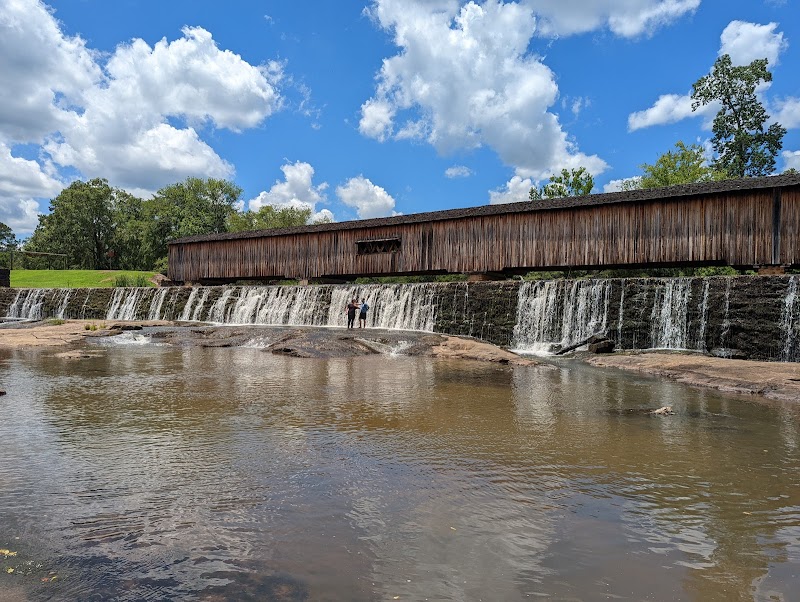Embark on a ghost hunt through Athens’ historic cemeteries—where history and mystery merge beneath ancient stone and whispering trees. This guide equips you with the practical steps and local insights to navigate these hauntingly beautiful grounds safely and respectfully.
Choose Sturdy Footwear
Wear shoes that can handle uneven, sometimes slippery terrain and gravel to keep you steady throughout your ghost hunt.
Bring Reliable Lighting
A headlamp or strong flashlight with extra batteries is necessary for navigating unlit areas after dusk.
Stay Hydrated
Carry at least one liter of water per person—even in cooler weather, dehydration can sneak up during extended walks.
Respect Quiet Zones
Limit noise to avoid disturbing local wildlife and honoring the sanctity of the cemeteries.
Ghost Hunting in Athens' Historic Cemeteries: Preparing for a Night of Mystery and Exploration

Haunted Athens Ghost Tour
Discover the haunted history of Woodstock, Georgia, with an exclusive private ghost tour. Led by expert guides, this adventure uncovers eerie stories and haunted sites in a thrilling, safe setting. Keep reading to learn more about this spooky experience!
Athens’ historic cemeteries offer a unique adventure—one where history and the uncanny meet beneath the Athenian sky. Preparing for a ghost hunt here means gearing up to engage with spaces that are quietly alive with stories, shaded by sculptures and marble mausoleums dating back centuries. The key paths through these resting places stretch roughly 2 to 4 kilometers, with minor elevation changes around 50 meters, making the terrain manageable but varied enough to keep senses alert.
As you weave through avenues lined with weathered headstones and towering cypresses that seem to watch your progress, the silence itself feels like a living entity. The air shifts—sometimes heavy with the musk of damp earth, other times crisp from the breeze carrying whispers of history. To fully experience this, timing your hunt after dusk amps the thrill while inviting a focused respect for the grounds’ solemn nature.
Practical preparation is crucial. Comfortable, sturdy footwear with good grip will handle the uneven gravel and occasional moss-slick stones. Bring a reliable headlamp or flashlight with fresh batteries; shadows here play tricks, and the light will be your guide through cryptic corners. Hydration matters even in cooler evenings: a liter of water per person is a sound baseline. Avoid loud noises—these cemeteries are active not just with spirits but local wildlife, from owls prowling overhead to the rustle of foxes below.
Navigating these cemeteries requires mindfulness. Paths aren’t always clearly marked, so a map or GPS app loaded with local waypoints can prevent unplanned detours. Start your ghost hunt early enough to familiarize yourself with the landscape in daylight—you want to respect the site while tuning your senses for the night. Remember, this is less about conquest and more about an encounter, a conversation with a place fiercely itself, steeped in the layers of Athens’ long human story.
Seasonal timing shifts the atmosphere significantly. Spring and fall provide ideal weather with cool air that carries sound well. Summer nights, though warmer, invite more mosquitoes and make hydration a priority. Winter calls for thicker clothing and a readiness for chill winds that dare you to linger. Overall, stay pragmatic, respect the ground beneath your feet, and prepare not just for fear, but for a compelling engagement with Athens’ spectral past.
Nearby Trips
All Adventures
Boat Charters
Water Activities
Adventures near Athens
Discover the unique and memorable adventures that make Athens special.
Frequently Asked Questions
Are Athens' cemeteries open to visitors at night?
Some historic cemeteries in Athens allow entry after dusk, but access rules vary by location. It's important to check local regulations and secure any necessary permissions before planning a night ghost hunt.
What kind of terrain should I expect in the cemeteries?
The terrain typically includes gravel paths, stone steps, and patches of moss or grass. It’s uneven but mostly gentle, with small elevation changes around 50 meters over the route length.
Is the ghost hunting experience safe for solo adventurers?
While solo ghost hunters can have rewarding experiences, it’s recommended to go with a companion, especially at night, to enhance safety and share observations.
What local wildlife might I encounter during a ghost hunt?
Expect nocturnal species like owls, bats, foxes, and sometimes hedgehogs. These animals add to the atmosphere but tend to keep their distance.
Are there any cultural customs or etiquette to follow in Athens' cemeteries?
Visitors should maintain silence, avoid touching monuments, and respect any active memorial services. These sites are both cultural landmarks and sacred spaces.
What other activities can I combine with a ghost hunt in Athens?
Daytime visits to nearby archaeological sites like Kerameikos and guided historical tours can enrich your understanding of Athens’ layered past.
Recommended Gear
Headlamp or Strong Flashlight
Light your path safely during twilight and night explorations.
Sturdy Hiking Shoes
Protect your feet on uneven, sometimes slippery cemetery grounds.
Water Bottle (at Least 1L)
Stay hydrated, especially when temperatures rise during summer evenings.
Light Rain Jacket
Shield yourself from occasional rain and shifting weather.
Local Insights
Hidden Gems
- "A quiet viewpoint overlooking the Kerameikos plain accessible via a lesser-known side path"
- "An ancient olive tree grove within one cemetery acting as a natural sanctuary"
Wildlife
- "Barn owls hunting at dusk"
- "Eurasian red squirrels"
- "Nocturnal hedgehogs rustling through leaves"
History
"Athens' cemeteries serve as open-air museums showcasing funerary art from ancient Greece to the modern era, reflecting shifting cultural attitudes toward death and remembrance."
